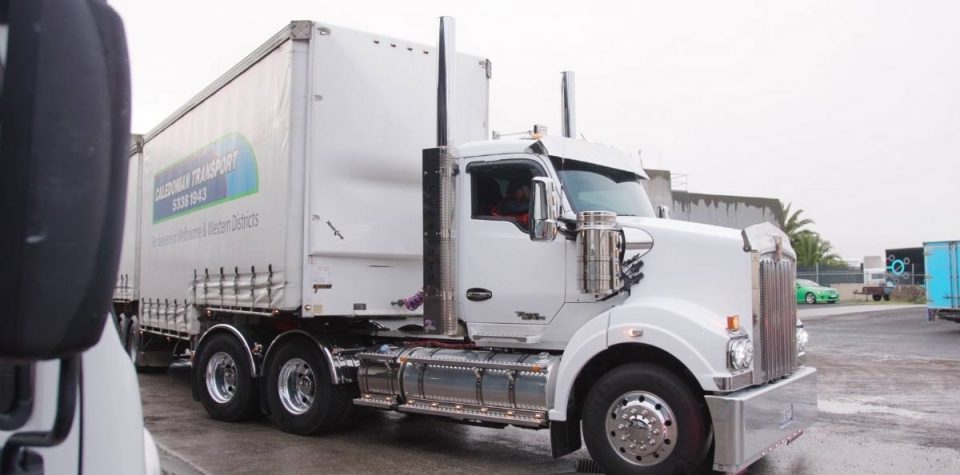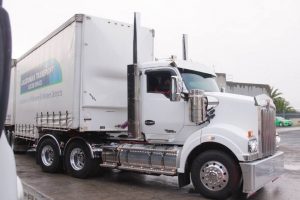Table of Contents:
- Two Colours, and Then a Third
- The other Geneva convention
- Stop and Go
- Stop here
- Anzac Parade
- Go From Red to Green With the Help of Logistics Software
- Communications and directions
How logistics software can help navigate traffic light hold-ups on busy city routes and quiet country roads.
I like traffic lights,
– Monty Python’s Flying Circus.
But only when they’re green.
Traffic lights. The bloody things are the bane of delivery drivers, truckies and logistics operators. They never seem to be in sync, and they always change from green to amber just as you get to them. But, of course, without them, it would be chaos!
Traffic lights play an important role in managing traffic flow and improving road safety. But they can also have a significant impact on delivery logistics in Australia. Traffic lights can cause delays and congestion, particularly in busy urban areas, which can make it challenging for logistics operators and delivery companies to navigate through the city and make timely deliveries.
In this article, we will take a look at the history and development of traffic lights, and how logistics software can play a critical role in avoiding red light snarl-ups on busy city streets…and Outback tracks.
Two Colours, and Then a Third.
The world’s first traffic light was installed at Parliament Square in London on December 10, 1868. The system comprised two mobile signs attached to pivoting arms that could be manipulated by a lever. Each post was equipped with a gas-lit semaphore to ensure it could be seen. But it was a short-lived trial. Less than two months later, one of the lights exploded, maiming the police officer who was working the signs.
It took another 46 years until electricity became widespread enough for the first dual-coloured traffic light to be installed in Cleveland in the United States. Traffic engineers in Detroit and New York City added a yellow light between the red and green ones in 1920. Thus, the traffic lights that we know today were born and became the norm throughout the world.
The [other] Geneva convention
The first convention on the unification of road signals was signed in Geneva on March 30, 1931. The goal of this convention was to standardize road traffic rules and to facilitate international control of road movements through a system of signals. Most of the road signs that we recognize today were defined by this treaty and traffic lights with three colours — red, yellow, and green — became the standard.
Today, traffic lights in Australia and worldwide are automated and controlled by sophisticated computer systems. These systems use sensors to detect the presence of vehicles and pedestrians, and they adjust the timing of the lights accordingly to ensure that traffic flows as safely and smoothly as possible.
Stop and Go.
Whether you are trying to get a delivery to its destination on time or heading down a back country road to some distant station or mine, chances are, traffic lights are going to come into the equation at some point. Because traffic lights aren’t just a factor in city driving…they are also pretty common out in the bush.
Stop here
You know the ones we mean. Way out back, on some isolated red dirt road, you come across a red light telling you to stop and wait. You haven’t seen another vehicle for ages, and there doesn’t appear to be anything going on the road ahead. But you dutifully stop, maybe shut off the engine, get out to stretch your legs, look at your watch for the umpteenth time and wonder what the blimmin’ blasted flippin’ heck is going on…or words to that effect!
But eventually, a grader or something turns up, driven by a cheerful bloke with a greasy Akubra the size of a cartwheel and a durrie pasted to the corner of his mouth. He gives you a cheery wave as he goes past in a cloud of red dust, the light changes to green, and you are on your way again.
Anzac Parade
For generations, the intersection of Anzac Parade and Gardners Road in the Sydney suburb of Kingsford was regarded as the worst intersection in Australia. With a double-lane roundabout, multiple intersecting roads and a multitude of traffic lights, the intersection was confusing, time-consuming and annoying.
These days, of course, the construction of a light rail line in the area has facilitated the abandonment of the original roundabout layout in favour of a Christmas light array of traffic signals. This has made the intersection much easier to navigate, but it is still one that can hold up even the most efficient delivery system.
So it’s a good thing that Transport Management Software developed by TransVirtual is coming to the rescue. Here’s how we can do that…
Go From Red to Green With the Help of Logistics Software.
Managing routes through busy cities, with their myriad intersections, traffic lights, bottlenecks and road works, is where software can play a critical role in improving delivery logistics in Australia. By leveraging advanced algorithms and real-time data, logistics software can help logistics operators and delivery companies plan and execute more efficient and successful parcel deliveries around the crowded city streets or Outback roads where roadworks can pop up at any time.
Logistics software can identify the most efficient delivery routes based on current traffic flows and other factors such as delivery deadlines and vehicle weight restrictions. This can help reduce the risk of delays and ensure that your deliveries are made on time and within budget.
Communications and directions
Logistics software can also help improve communication with your delivery drivers while they are out on the streets or the country roads. By providing real-time visibility and status updates, logistics software can keep track of deliveries and ensure that they are being made according to plan.
In addition, logistics software will enable you to manage complex delivery networks and coordinate deliveries across multiple locations. This can help reduce the overall delivery time and improve customer satisfaction.
So while traffic lights — and other impediments — can pose a challenge to delivery operations in Australia, logistics software can provide a powerful set of tools you can use to overcome these challenges and achieve more efficient and successful deliveries.
So, next time you’re stuck at a red light, remember that logistics software can help you overcome obstacles such as traffic lights and keep your deliveries running smoothly. After all, in the world of logistics, time is money and every second counts!



